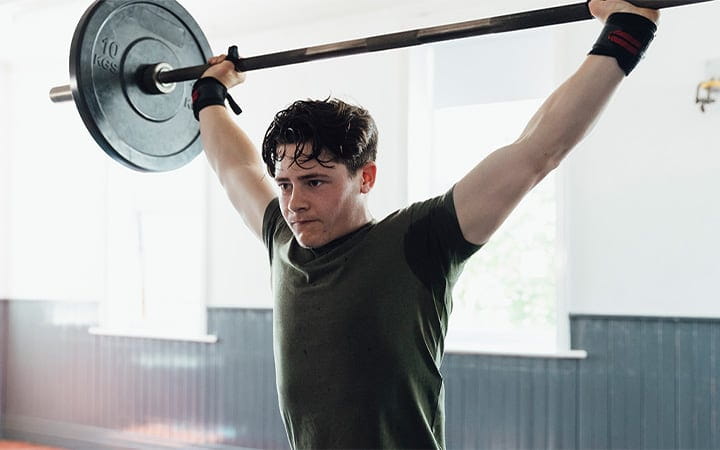Bigorexia Surges: More Teen Boys Battle Body Obsession
October 07, 2025
 University Hospitals Rainbow Babies & Children'sExperts in Children's Health
University Hospitals Rainbow Babies & Children'sExperts in Children's Health

Experts have long understood that body dysmorphia and eating disorders can have a devastating effect on a person’s mental and physical health. Now pediatric and mental health experts are warning about a lesser-known form of body dysmorphia that is on the rise among adolescent boys and young men called muscle dysmorphia or “bigorexia.”
With this disorder, the person perceives their body as being underdeveloped or too small. Boys with bigorexia will often go to extreme lengths to build up their muscles and may engage in dangerous behaviors to do so.
The growing social media and influencer culture puts more pressure on today’s youth to achieve what they believe to be the “ideal” body type and is contributing to this disturbing trend, says David Miller, MD, LAc, medical director of Pediatric Integrative Medicine and Family and Child Life Services at University Hospitals.
Who Is at Risk for Bigorexia?
While muscle dysmorphia can affect people of any age or sex, it is especially prevalent in teen and young adult males ages 15 – 32. It tends to affect people who spend a lot of time on social media, are heavily influenced by their peers or have been bullied or body shamed in the past. It’s more common in the bodybuilding and weightlifting communities, and the tendency can also run in families.
Signs to Look For
Some of the signs that your teen may be suffering from bigorexia include:
- Obsession with their physical appearance, including frequent body checking in the mirror.
- Perceive themselves to be much smaller than they are.
- Spending excessive time at the gym or exercising.
- Disordered eating behaviors, including food deprivation or excessive use of protein powders, shakes and supplements.
- High dissatisfaction with their body, anxiety about appearance, low self-esteem and negative self-talk.
- Signs of steroid use, which can include mood changes/aggressive behavior, hair pattern changes and increased acne.
The Dangers of Muscle Dysmorphia
People with muscle dysmorphia can experience extremely negative attitudes towards themselves and their bodies, which can impact their self-image, their relationships and their overall wellbeing. They may experience higher rates of depression and anxiety and can develop obsessive behaviors around exercise and diet routines. Prioritizing these behaviors can lead them to neglect other areas of their life, such as school, work or social activities.
Extreme workouts can take a physical toll on the body as well and can cause joint damage, overloaded spine or other over-exertion injuries. The use of anabolic steroids can also cause problems such as hormone disruptions, an increased risk of cancer later in life, and an increase in risky behaviors associated with steroid-induced aggression.
Talking to Your Teen and When to Seek Help
If you notice any concerning behaviors in your teen, try to engage with them and identify any specific feelings, concerns or anxiety they have toward their body. It’s important not to invalidate their concerns; while you may be tempted to tell them there’s nothing wrong with the way they look, this can backfire, making them feel judged and defensive, Dr. Miller warns.
“It may be more helpful to emphasize that there is no one 'ideal' body type and no right or wrong way to look,” says Dr. Miller. “Try to get them to open up about how they perceive themselves – gaining their perspective may get you further than dismissing their concerns.”
While it may be impossible to eliminate all social media consumption, encourage your child to limit their interactions with the types of content that feed into their body dysmorphia. You can also model a healthy attitude toward your own body and avoid negative self-talk in front of them.
If negative behaviors persist, your child may benefit from an evaluation with a psychologist with experience treating body dysmorphia. Cognitive behavioral therapy can be an effective tool in helping people overcome issues related to body dysmorphia and disordered eating.
Related Links
Our pediatric integrative health team works with other UH Rainbow pediatric specialists to provide a holistic approach to treating a broad range of childhood conditions and symptoms, mental health and behavioral issues such as anxiety, body dysmorphia and eating disorders.
UH Rainbow Babies & Children’s Hospital’s dedicated team of more than 1,300 pediatric specialists uses the most advanced treatments and latest innovations to deliver the complete range of pediatric specialty services for 750,000 patient encounters each year.


